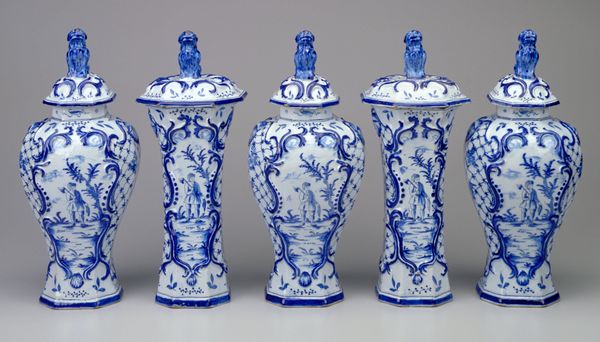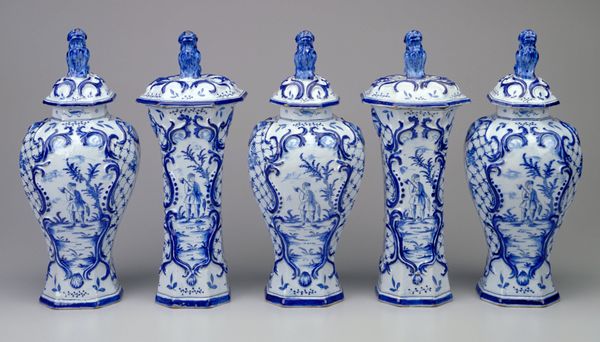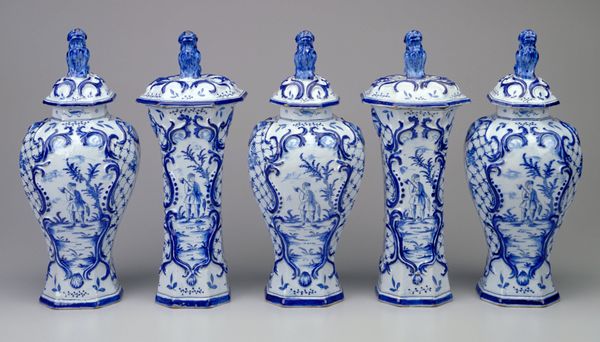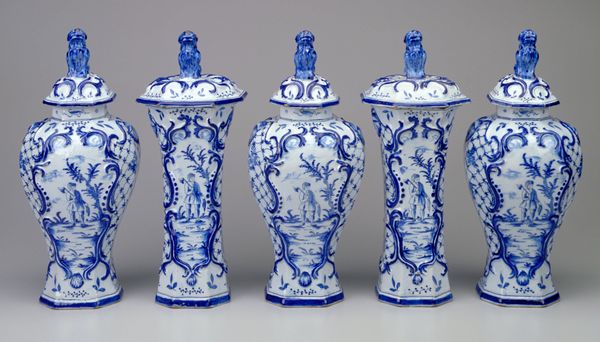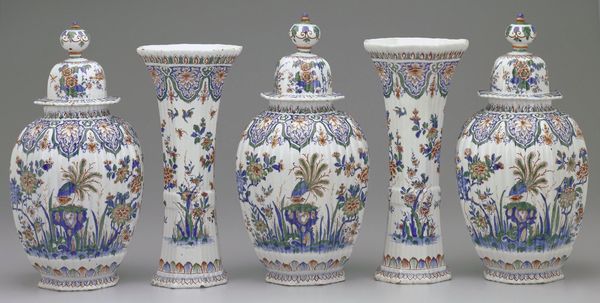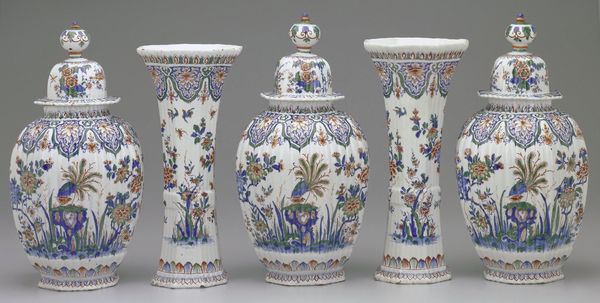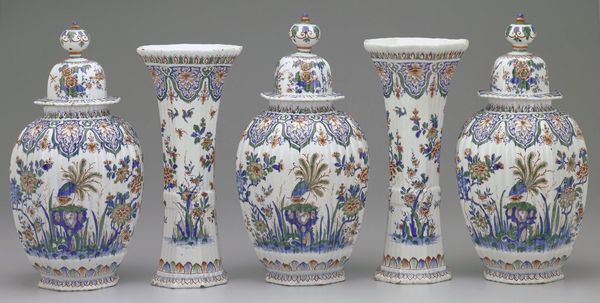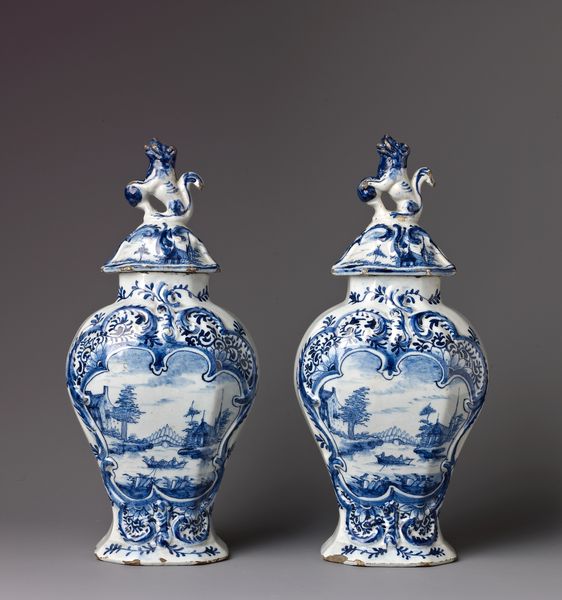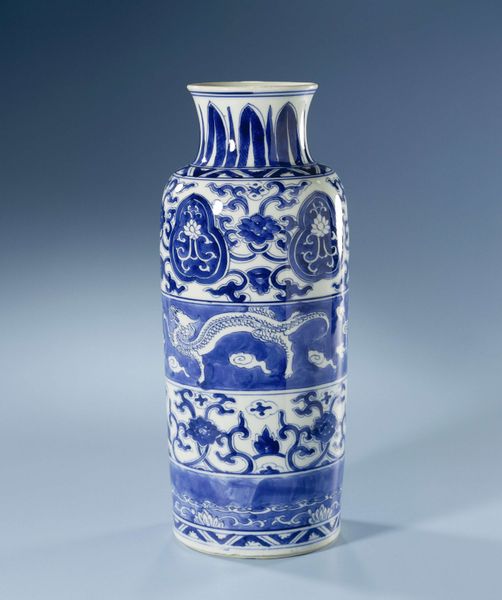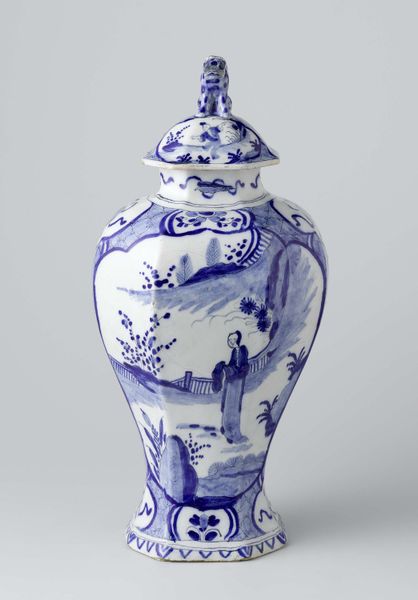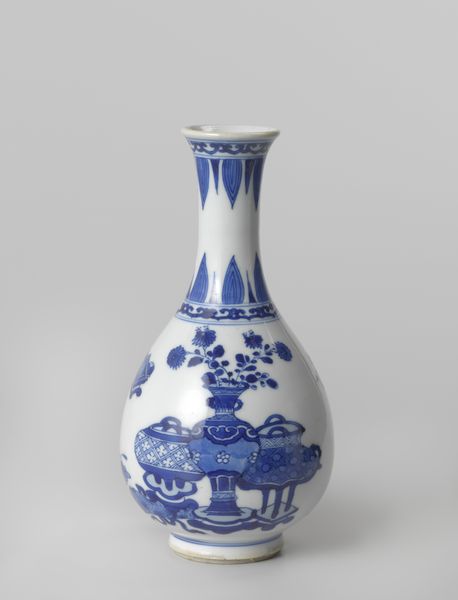
Dimensions: 16 1/4 x 6 5/16 x 5 3/4 in. (41.3 x 16 x 14.6 cm)
Copyright: Public Domain
Editor: So, this is a set of five covered conical vases crafted around 1764 by Jacobus Halder Adriaesensz, currently residing at the Minneapolis Institute of Art. They're made of porcelain with these delicate, blue decorations. I find the variation in shape between them really striking. What visual elements stand out to you in these pieces? Curator: The interplay of form and surface decoration is, indeed, compelling. Note the contrasting silhouettes - some curvilinear, others distinctly angular. These are variations within a larger formal theme. How do these distinct shapes interact within the set's overall visual unity, achieved through consistent cobalt-blue decoration? Editor: Well, they are all painted in a similar style and color palette which links them visually. How does the ornamentation influence the way we perceive their shapes individually? Curator: The applied imagery acts as a structuring principle. The recurring motifs – classical figures within structured, almost architectural cartouches – serve to flatten and unify diverse three-dimensional forms. Semiotically, consider the balance of symmetry and asymmetry in the decoration; do you find a deliberate tension created between surface and volume? Editor: That's a fascinating point. The patterns sometimes seem to fight the form, especially in the more angular vases. Do you think that conflict enhances the visual interest? Curator: Precisely. It is a controlled discord that animates the viewing experience, an appeal to decipher a coherent relationship between line, plane, and depth. Moreover, such formalism could be interpreted as a commentary on the artificiality inherent within decorative arts. What, then, is communicated by their existence as a unified grouping? Editor: It’s like they're meant to be appreciated as a collection, almost like variations on a theme. Seeing them together emphasizes their shared artistic language and subtly different personalities. I’ll definitely look at decorative arts differently now! Curator: An object lesson learned from an in-depth, materially driven exploration of historical artifacts. A good formalism, and art itself, always reveals its complexity under close observation.
Comments
No comments
Be the first to comment and join the conversation on the ultimate creative platform.
